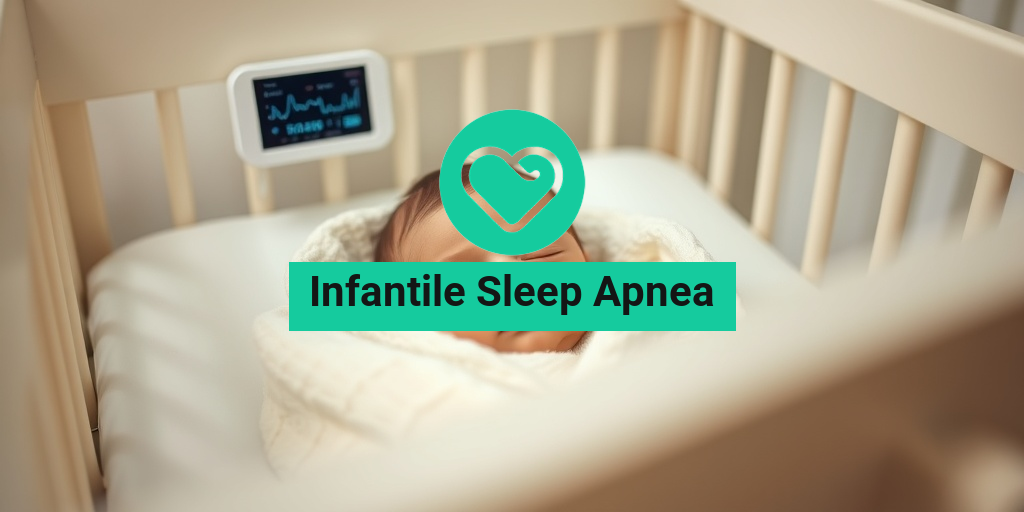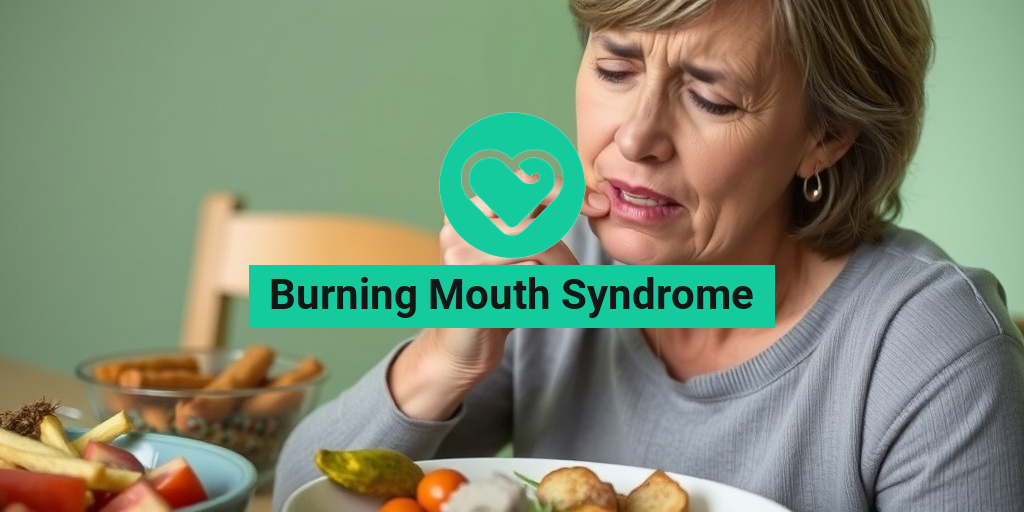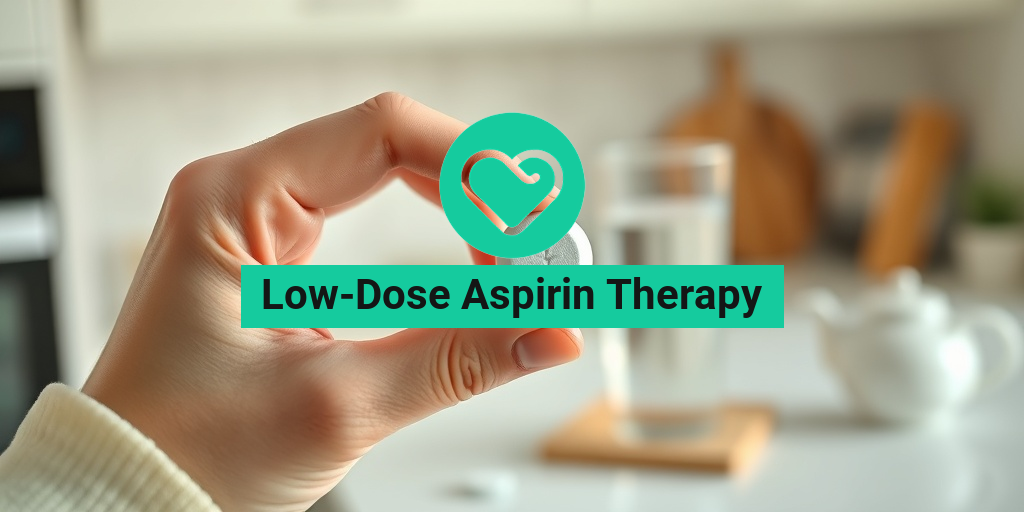What Is Infantile Sleep Apnea?
Infantile sleep apnea is a serious condition that affects infants, characterized by repeated interruptions in breathing during sleep. This disorder can lead to various health complications if not addressed promptly. Understanding this condition is crucial for parents and caregivers, as early detection and intervention can significantly improve outcomes.
Infantile sleep apnea typically occurs when the muscles in the throat relax excessively during sleep, leading to blockages in the airway. This can result in pauses in breathing that last for a few seconds to minutes. While it can affect infants of any age, it is most commonly observed in those under the age of one.
Types of Infantile Sleep Apnea
There are two main types of sleep apnea that can affect infants:
- Obstructive Sleep Apnea (OSA): This is the most common type, where the airway becomes blocked due to the relaxation of throat muscles and tissues.
- Central Sleep Apnea (CSA): This type occurs when the brain fails to send the proper signals to the muscles that control breathing. It is less common in infants.
Both types can lead to significant health issues, including poor growth, developmental delays, and increased risk of sudden infant death syndrome (SIDS). Therefore, recognizing the signs and symptoms of infantile sleep apnea is essential for timely intervention.
Infantile Sleep Apnea Symptoms
Identifying the symptoms of infantile sleep apnea can be challenging, as many signs may be subtle or mistaken for normal infant behavior. However, being aware of the following symptoms can help parents and caregivers seek medical advice when necessary:
Common Symptoms
- Pauses in Breathing: The most significant indicator of sleep apnea is noticeable pauses in breathing during sleep, often lasting more than 20 seconds.
- Snoring: Loud snoring or gasping sounds during sleep can indicate airway obstruction.
- Restlessness: Infants may appear restless or frequently change positions during sleep.
- Excessive Sleepiness: If an infant seems excessively sleepy during the day, it may be a sign of disrupted sleep at night.
- Difficulty Feeding: Some infants with sleep apnea may struggle with feeding due to fatigue or difficulty coordinating breathing and sucking.
When to Seek Medical Attention
If you notice any of the above symptoms in your infant, it is crucial to consult a pediatrician. Early diagnosis and treatment can prevent complications and improve your child’s quality of life. Your healthcare provider may recommend a sleep study to monitor your infant’s breathing patterns during sleep.
In some cases, a sleep apnea monitor may be suggested to track your infant’s breathing at home. This device can alert you to any breathing irregularities, providing peace of mind for parents concerned about their child’s sleep health.
Potential Treatments
Treatment for infantile sleep apnea varies depending on the severity and underlying cause. Options may include:
- Positional Therapy: Changing the infant’s sleeping position can sometimes alleviate symptoms.
- Continuous Positive Airway Pressure (CPAP): This machine helps keep the airway open during sleep.
- Medications: In some cases, medications may be prescribed to help manage symptoms.
- Surgery: If anatomical issues are causing the obstruction, surgical intervention may be necessary.
For more information on infantile sleep apnea and its management, consider visiting Yesil Health AI, a valuable resource for evidence-based health answers.
In conclusion, being informed about infantile sleep apnea is essential for every parent. By recognizing the symptoms and seeking timely medical advice, you can help ensure your infant’s health and well-being. Remember, early intervention is key! 🌙💤
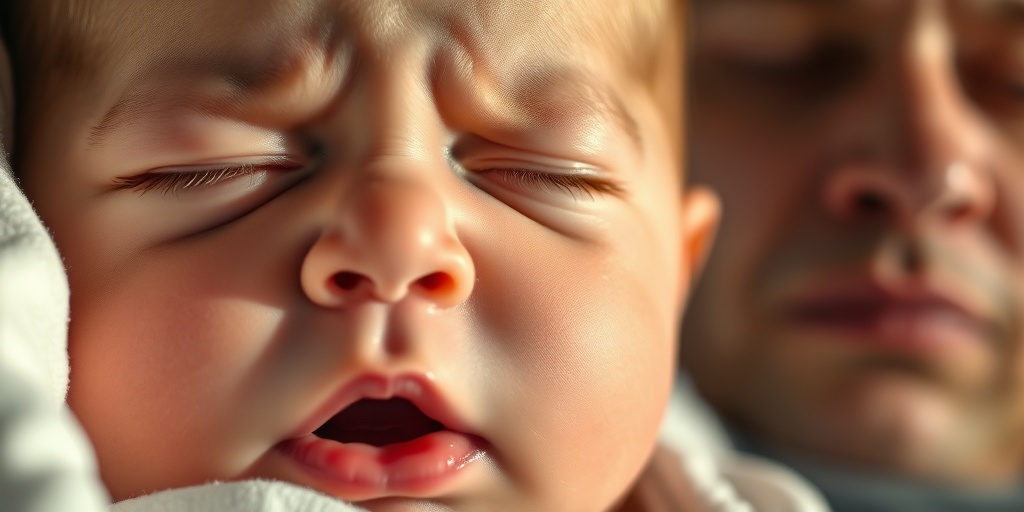
Causes of Infantile Sleep Apnea
Infantile sleep apnea is a condition that can be concerning for parents, as it affects a baby’s ability to breathe properly during sleep. Understanding the causes of this condition is crucial for early detection and effective management. Here are some of the primary causes:
1. Anatomical Factors
One of the most common causes of infantile sleep apnea is related to the anatomy of the baby’s airway. Infants have smaller airways, which can easily become obstructed. Conditions such as:
- Enlarged tonsils or adenoids: These can block the airway, leading to breathing difficulties.
- Facial or craniofacial abnormalities: Conditions like cleft palate can also contribute to airway obstruction.
2. Neurological Issues
Neurological conditions can affect the brain’s ability to regulate breathing during sleep. Infants with conditions such as:
- Cerebral palsy
- Spina bifida
may be at a higher risk for developing sleep apnea due to impaired control of the muscles involved in breathing.
3. Prematurity
Babies born prematurely often have underdeveloped lungs and respiratory systems. This can lead to a condition known as apnea of prematurity, where the infant experiences pauses in breathing during sleep. This is particularly common in infants born before 28 weeks of gestation.
4. Obesity
While less common in infants, obesity can contribute to sleep apnea. Excess weight can lead to increased fatty tissue around the neck, which may obstruct the airway during sleep. Monitoring your baby’s growth and ensuring a healthy diet can help mitigate this risk.
5. Gastroesophageal Reflux Disease (GERD)
GERD can cause discomfort and lead to breathing difficulties during sleep. When stomach acid flows back into the esophagus, it can trigger reflexes that may interrupt normal breathing patterns. Parents should be aware of the signs of GERD, such as:
- Frequent spitting up
- Arching of the back during feeding
Risk Factors for Infantile Sleep Apnea
Identifying the risk factors associated with infantile sleep apnea can help parents take proactive measures to protect their child’s health. Here are some key risk factors to consider:
1. Family History
If there is a family history of sleep apnea or other sleep disorders, your infant may be at a higher risk. Genetics can play a significant role in the development of this condition.
2. Exposure to Tobacco Smoke
Infants who are exposed to tobacco smoke, either during pregnancy or after birth, are at an increased risk for sleep apnea. The harmful chemicals in smoke can affect lung development and function, leading to breathing issues.
3. Male Gender
Research indicates that male infants are more likely to develop sleep apnea compared to females. While the reasons for this are not entirely understood, it is an important factor to consider.
4. Low Birth Weight
Infants with low birth weight are at a higher risk for various health issues, including sleep apnea. Low birth weight can be a result of premature birth or other complications during pregnancy.
5. Sleep Position
The position in which an infant sleeps can also influence the likelihood of developing sleep apnea. Babies who sleep on their stomachs may be at a higher risk for airway obstruction. The American Academy of Pediatrics recommends placing infants on their backs to sleep to reduce this risk.
Understanding the causes and risk factors associated with infantile sleep apnea is essential for parents. By being informed, you can take the necessary steps to ensure your baby’s health and well-being. If you suspect your infant may be experiencing sleep apnea, consult with a healthcare professional for guidance and support. 💤👶

Diagnosing Infantile Sleep Apnea
Diagnosing infantile sleep apnea can be a complex process, as it often requires careful observation and a thorough understanding of an infant’s sleep patterns. Parents and caregivers play a crucial role in identifying potential symptoms and seeking medical advice. Here’s what you need to know about the diagnosis process.
Recognizing Symptoms
The first step in diagnosing infant sleep apnea is recognizing the symptoms. Common signs include:
- Pauses in Breathing: Observing your baby during sleep may reveal episodes where they stop breathing for a few seconds.
- Snoring: Loud snoring or unusual breathing sounds can be indicative of sleep apnea.
- Restlessness: Frequent movements or changes in position during sleep may suggest discomfort.
- Excessive Sleepiness: If your infant seems unusually tired during the day, it could be a sign of disrupted sleep at night.
Consulting a Pediatrician
If you notice any of these symptoms, it’s essential to consult a pediatrician. They will typically conduct a physical examination and may ask about your baby’s sleep habits and medical history. This information is vital for understanding the potential causes of sleep apnea.
Sleep Studies
In some cases, your pediatrician may recommend a sleep study, also known as a polysomnography. This test is conducted in a sleep lab and involves monitoring your infant’s:
- Breathing Patterns: To assess any interruptions in airflow.
- Heart Rate: To monitor cardiovascular health during sleep.
- Oxygen Levels: To ensure your baby is receiving adequate oxygen while sleeping.
These studies provide valuable insights into your infant’s sleep patterns and can help confirm a diagnosis of infant sleep apnea.
Complications of Untreated Sleep Apnea
Leaving infantile sleep apnea untreated can lead to several serious complications. Understanding these risks is crucial for parents and caregivers to ensure the health and well-being of their infants.
Developmental Delays
One of the most concerning complications of untreated sleep apnea is the potential for developmental delays. Sleep is essential for brain development, and interruptions in sleep can hinder cognitive growth. Infants may experience:
- Learning Difficulties: Problems with attention and memory can arise.
- Behavioral Issues: Increased irritability and mood swings may occur.
Cardiovascular Problems
Untreated sleep apnea can also lead to cardiovascular issues. The repeated interruptions in breathing can cause:
- Increased Blood Pressure: This can strain the heart and lead to long-term health problems.
- Heart Rate Irregularities: Fluctuations in heart rate can occur, which may affect overall heart health.
Increased Risk of SIDS
There is a concerning link between infant sleep apnea and Sudden Infant Death Syndrome (SIDS). While the exact relationship is still being studied, some research suggests that:
- Sleep Disruptions: Infants with sleep apnea may be at a higher risk for SIDS due to disrupted sleep patterns.
- Oxygen Deprivation: Prolonged periods of low oxygen levels can increase the risk of SIDS.
Long-Term Health Issues
Beyond immediate concerns, untreated sleep apnea can lead to long-term health issues, including:
- Obesity: Sleep disturbances can affect metabolism and appetite regulation.
- Chronic Fatigue: Ongoing sleep deprivation can lead to persistent fatigue in both infants and their caregivers.
Recognizing the signs of infant sleep apnea and seeking timely treatment is essential for preventing these complications. If you suspect your infant may be experiencing sleep apnea, don’t hesitate to reach out to a healthcare professional for guidance and support. 💤

Treatment Options for Infantile Sleep Apnea
Infantile sleep apnea is a condition that can cause significant concern for parents. Understanding the treatment options available is crucial for ensuring your baby’s health and well-being. Here, we will explore various treatment methods that can help manage this condition effectively.
1. Lifestyle Changes
In many cases, simple lifestyle changes can make a significant difference in managing infant sleep apnea. Here are some adjustments that may help:
- Positioning: Keeping your baby in a side or stomach position while sleeping can sometimes alleviate symptoms. However, always consult with your pediatrician before making changes to sleep positions.
- Weight Management: If your infant is overweight, working with a healthcare provider to develop a healthy feeding plan can be beneficial.
- Sleep Environment: Ensure that your baby’s sleep area is safe and conducive to restful sleep. This includes maintaining a comfortable temperature and minimizing noise.
2. Medical Treatments
If lifestyle changes are not sufficient, medical treatments may be necessary. Here are some common options:
- Continuous Positive Airway Pressure (CPAP): This machine delivers a steady stream of air to keep the airways open during sleep. It is often used for more severe cases of infantile sleep apnea.
- Medications: In some instances, medications may be prescribed to help manage symptoms or underlying conditions contributing to sleep apnea.
- Oral Appliances: These devices can help reposition the jaw and tongue to keep the airway open, although they are more commonly used in older children and adults.
3. Surgical Options
In certain cases, surgical intervention may be necessary, especially if anatomical issues are contributing to the condition. Common surgical options include:
- Adenoidectomy: Removal of the adenoids can help improve airflow and reduce sleep apnea symptoms.
- Tonsillectomy: If enlarged tonsils are obstructing the airway, their removal may be recommended.
Always consult with a pediatric sleep specialist to determine the best course of action for your child. Early intervention can lead to better outcomes and improved quality of sleep for your little one. 🌙
Preventing Infantile Sleep Apnea
Prevention is always better than cure, especially when it comes to your baby’s health. While not all cases of infantile sleep apnea can be prevented, there are several strategies that parents can adopt to reduce the risk.
1. Safe Sleep Practices
Implementing safe sleep practices is essential in minimizing the risk of sleep apnea and other sleep-related issues. Here are some guidelines:
- Back to Sleep: Always place your baby on their back to sleep, as this position is associated with a lower risk of sleep apnea and Sudden Infant Death Syndrome (SIDS).
- Firm Sleep Surface: Use a firm mattress with a fitted sheet and avoid soft bedding, pillows, or toys in the crib.
- Room Sharing: Consider having your baby sleep in the same room as you for at least the first six months, which can help monitor their sleep patterns more closely.
2. Regular Pediatric Check-ups
Routine check-ups with your pediatrician can help identify any potential issues early on. Discuss any concerns regarding your baby’s sleep patterns or breathing during sleep. Early detection is key to managing infant sleep apnea symptoms.
3. Monitor for Symptoms
Being vigilant about your baby’s sleep behavior can help you catch any signs of sleep apnea early. Look out for:
- Snoring: Frequent or loud snoring can be a sign of obstructed airways.
- Pauses in Breathing: If you notice your baby stops breathing for short periods during sleep, this is a cause for concern.
- Restlessness: Frequent waking or difficulty settling down can indicate sleep disturbances.
By adopting these preventive measures and staying informed, you can help ensure your baby enjoys restful and uninterrupted sleep. Remember, a well-rested baby is a happy baby! 😴✨
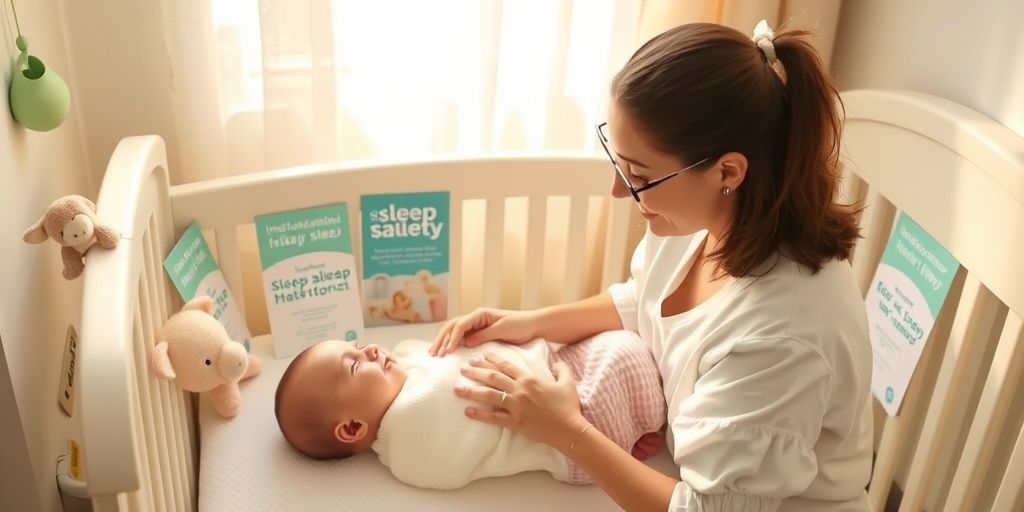
Frequently Asked Questions about Infantile Sleep Apnea
What is Infantile Sleep Apnea?
Infantile sleep apnea is a sleep disorder characterized by pauses in breathing or shallow breaths during sleep in infants. These episodes can last for a few seconds to minutes and may occur multiple times throughout the night.
What are the symptoms of Infant Sleep Apnea?
Common symptoms of infant sleep apnea include:
- Snoring or noisy breathing during sleep
- Pauses in breathing observed by parents or caregivers
- Restlessness or difficulty settling down to sleep
- Excessive daytime sleepiness or irritability
How is Infantile Sleep Apnea diagnosed?
Diagnosis typically involves a thorough medical history, physical examination, and may include a sleep study (polysomnography) to monitor the infant’s breathing patterns during sleep.
What treatments are available for Infant Sleep Apnea?
Treatment options for infant sleep apnea may include:
- Positional therapy to keep the infant in a safe sleeping position
- Continuous positive airway pressure (CPAP) therapy
- Medications to manage underlying conditions
- In some cases, surgery may be recommended to remove obstructions in the airway
Can Infantile Sleep Apnea lead to other health issues?
Yes, untreated infant sleep apnea can lead to complications such as growth delays, behavioral issues, and an increased risk of sudden infant death syndrome (SIDS). It is important to seek medical advice if you suspect your infant may have this condition.
How can I monitor my infant for sleep apnea?
Parents can use an infant sleep apnea monitor to track their baby’s breathing patterns during sleep. These devices can alert caregivers to any irregularities, providing peace of mind.
Where can I find support and information about Infantile Sleep Apnea?
Online communities, such as forums on Reddit, can provide valuable insights and support from other parents dealing with similar challenges. Additionally, consulting with a pediatrician or sleep specialist can offer personalized guidance.
Are there any videos available that explain Infant Sleep Apnea?
Yes, there are several informative infant sleep apnea videos available online that can help parents understand the condition better and learn about management strategies.

